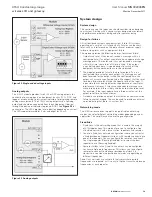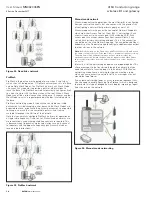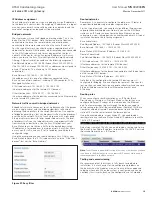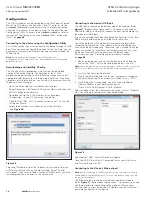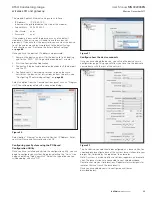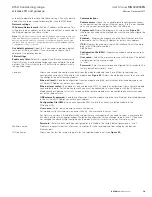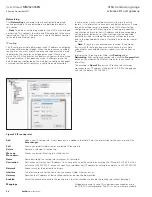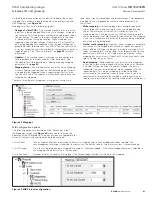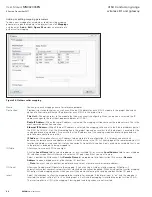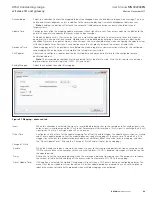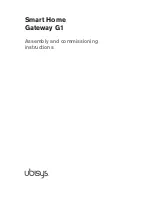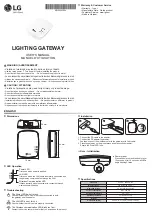
14
User Manual
MN032006EN
Effective December 2017
415U Condor-long-range
wireless I/O and gateway
EATON
www.eaton.com
Figure 24. Fixed links network
ProMesh
ProMesh is the best networking mode to use when it’s not clear
which sites will be repeaters. A ProMesh network consists of a Base
and multiple Mesh Nodes. In a ProMesh network, any Mesh Node
site can act as a repeater to provide a path for other stations to
reach the Base. The ProMesh network automatically configures itself
to a tree structure with the Base station at the root. When a Mesh
Node cannot find a direct connection to the base, It chooses another
Mesh Node to act as a repeater based on the best available path to
the base.
ProMesh networking mode is typically chosen where your radio
environment will be changing, either because the Mesh Nodes are
expected to move, or because the physical environment is expected
to change so much that the same radio paths will not remain
available throughout the lifetime of the network.
Note that you normally configure ProMesh network for operation on
a single radio frequency. Fixed Links or Manual mode networks are
more commonly used where paired frequencies are required. This
is because when frequencies are paired, stations can only connect
to repeaters with the opposite frequency pair (transmit matches
receive in both directions).
Figure 25. ProMesh network
Manual mode network
Manual mode networking provides the most flexibility in configuring
how your network connects, but also comes with the greatest risk
of configuring a network that performs poorly or not at all.
Manual mode networking uses the concept of Network Endpoints
which are either Access Point or Client (802.11 networking). Each
client will connect to an access point with matching SSID. Each
access point can accept connections from several clients. Each
station has a primary networking endpoint. This is the connection
you define on the main Networking page. You can define additional
endpoints on the Repeaters page to configure additional connections
to other stations in the network.
otee:
N
Behind the scenes, the Fixed Links and ProMesh network modes use
the same concept of Access Point and Client to implement their networking.
The main networking endpoint is always a client, which provides the
upstream connection toward the base, and for repeaters and Mesh Nodes,
an access point provides a second network endpoint for other devices to
connect to.
Internally, all of the networking endpoints are bridged together. This
allows messages to be transferred through the network, but you
need to be careful of causing loops in the network. With Manual
networking mode, there is nothing to stop you creating a loop,
which can cause excessive network traffic as messages are sent
around the loop forever.
If you create networking loops as a way to provide redundant links,
you also need to enable Spanning Tree Protocol, which is designed
to eliminate this type of bridged network loop by imposing a logical
tree structure on the network.
Figure 26. Manual mode networking














